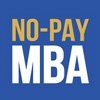This post is the first in a series on the market for MOOC-based education.
 My husband the economist loves to forward me economic research papers about MOOCs and higher education. One of these papers, from the National Bureau of Economic Research (NBER) has really stuck with me as I try to make sense of what MOOCs mean for higher education. It’s called “The Economics of Online Post-Secondary Education: MOOCs, Nonselective Education, and Highly Selective Education.” You can find it here – but FYI, you won’t be able to access it unless you have a .gov email address or are willing to pay five dollars for it.
My husband the economist loves to forward me economic research papers about MOOCs and higher education. One of these papers, from the National Bureau of Economic Research (NBER) has really stuck with me as I try to make sense of what MOOCs mean for higher education. It’s called “The Economics of Online Post-Secondary Education: MOOCs, Nonselective Education, and Highly Selective Education.” You can find it here – but FYI, you won’t be able to access it unless you have a .gov email address or are willing to pay five dollars for it.
So let me summarize for you: in the paper, the author describes two markets for higher education – the selective market (think grassy quadrangles and philosophical debates among knowledge-hungry 18-to-22-year-olds) and the nonselective market (think students who work full time while studying, commuter campuses, and associates degrees). To participate in the selective market, would-be students have to go through a rigorous admissions process, while anyone with a high school diploma or equivalency can participate in nonselective higher education.
These two markets operate under vastly different business models. Selective higher education is mostly funded with huge endowments, secured by giving students such a wonderful college experience that they are inspired to give money to the school years after graduation. In this model, tuition doesn’t begin to cover the cost of educating students, but it doesn’t matter because the real money comes from alumni giving. The nonselective market is the opposite. Students pay a tuition that mostly covers the cost of educating them, with no expectation that they will give money to the institution in the future. To summarize, the selective market functions like a venture capital equity market – with students as the investment – while the nonselective market is a market for service provision.
And it isn’t just the revenue models that differ between these two higher education markets. At nonselective institutions, curricula are more standardized, many people are capable of competently teaching the material, interactions with professors are fewer, dropout rates are higher, attendance can be episodic, and graduation within four years is the exception to the rule. In contrast, at selective institutions, course content is original, only a small group of professors is able to teach the material – which often draws on the latest research, interactions with professors are ubiquitous, dropouts rates are low, most students attend full time, and the majority finish within four years.
Why is this important? It matters for understanding MOOCs’ potential for disruption. The author of the NBER paper, Caroline Hoxby, argues that MOOCs have the potential to be most disruptive for the nonselective market since many of their features – low completion rates, standardized material, low professor interaction, lack of admissions process – are characteristic of education in that market.
In a recent op-ed in the Boston Globe, Harvard Business School professor Clayton Christensen and researcher Michelle Weise make a related argument. By ignoring “vocational training” in favor of academic education, universities have allowed an opening for skills-based education, more tailored to the needs of employers. Given that 80% of college-goers do not attend traditional four-year colleges – and that even those who do graduate from four-year colleges have an increasingly difficult time finding employment – this market is potentially quite large.
While MOOC providers and others in the MOOC movement are still searching for viable business models, one thing is clear: the disruption is coming.
In this series of posts I reflect on the various segments of the market for MOOCs – the challenges they face, the solutions that already exist in the marketplace, and others that don’t yet exist but could. While many solutions are springing up on an almost daily basis, there is still ample space for innovation.
I’ll start with the market for nonselective higher education, and I want to leave you with a key word that defines the needs of this market segment.
That word is ACCESS.
Stay tuned for more on this topic.



